Related
Over the years,The Far Sidefeatured multiple blink-and-miss-it self-referential callbacks including several that served as “sequels” to some of Gary Larson’s earliest cartoons,which actuallypredated the origins ofThe Far Sideitself.These panels emphasize the fact that Larson often wanted a second try at a particular joke, and serve as Easter Eggs for the most diehard, attentive fans of his work.
BeforeThe Far Sidedebuted in The San Francisco Chronicle at the start of 1980, a proto-incarnation of the series ranunder the titleNature’s Wayin The Seattle Times; with this initial syndicated comic, Larson began to develop his signature style of humor, and even generated several ideas he would return to years and years later.
Revisiting jokes, and offering reprises of the scenarios they embodied, was something Larson would continue to do throughoutThe Far Side’srun; not only did the comic have its perennial theme, but, in fact, it had more sneaky “sequel” comics than most readers realize.
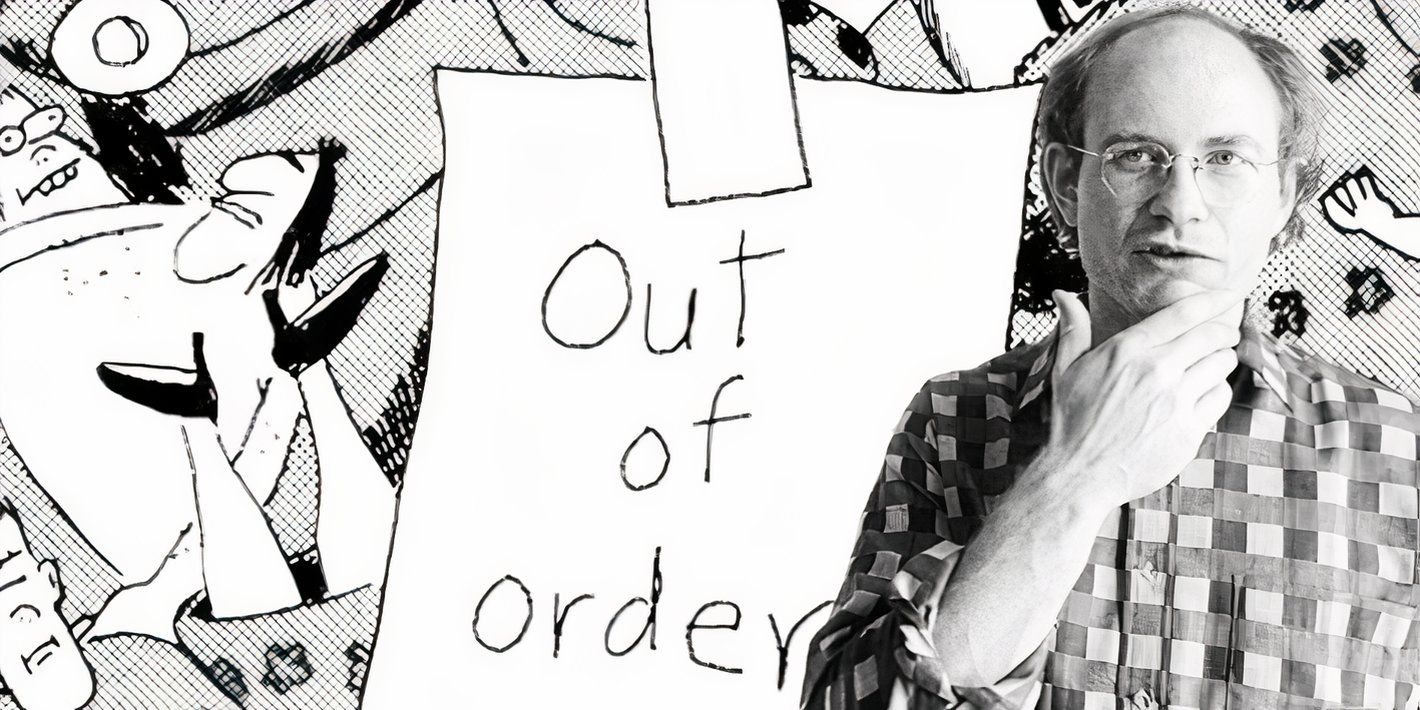
First, The Far Side’s Subtle “Stampede Through The Canyon” Cartoon, Explained
First Published: September 2, 1982
ThisFar Sidecartoon omits a caption, as Gary Larson was apparently confident thatthe image of a cowboy hat floating upward over a herd of stampeding wildlife, one of whom has a coffee pot stuck on its hoof, would communicate the punchline that a cowboy camping in the canyon under an idyllic moon-lit sky has been trampled by the onrushing animal horde effectively enough.
While this might be the case, the lack of caption for emphasis, or elaboration, results in this being ranked among the more subtle variety ofFar Sidejoke.
ForFar Sidecompletists, it is exciting to make the connection between this panel and one published over three years earlier, under theNature’s Waybanner.
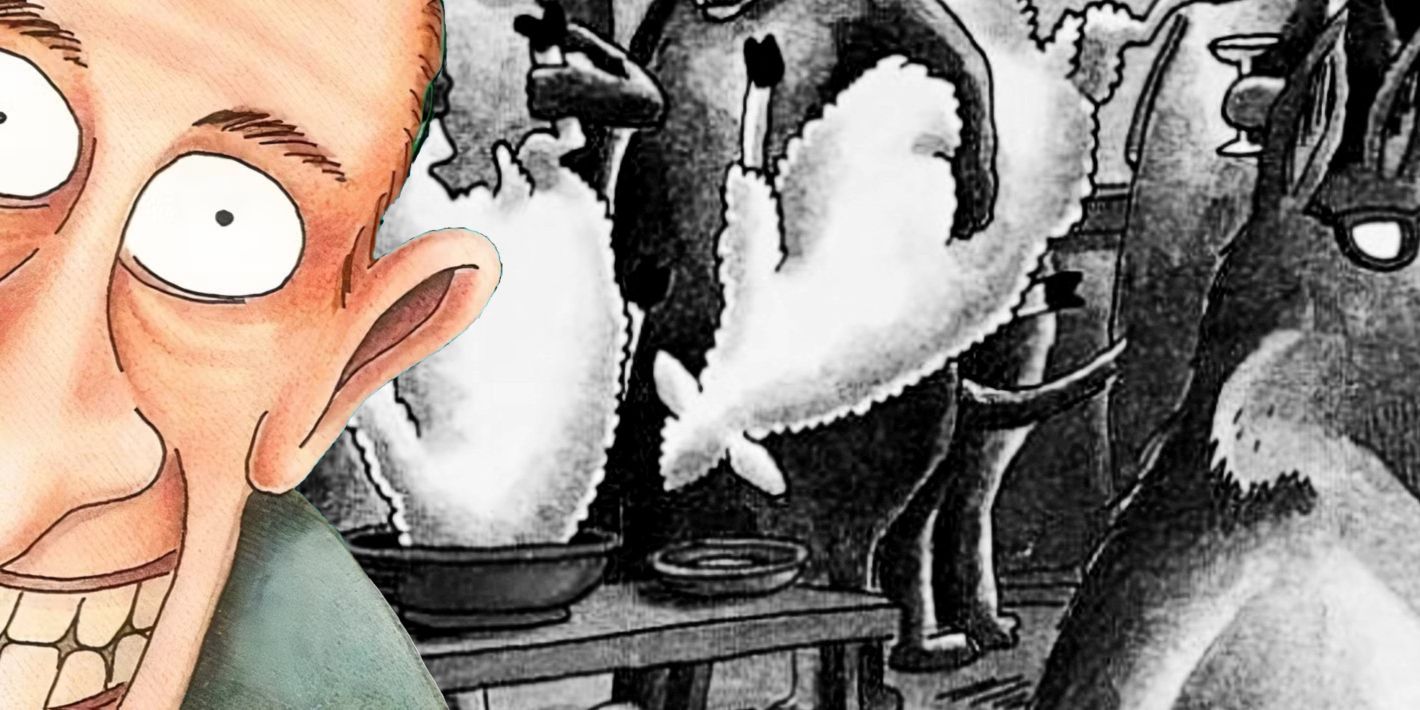
As far asThe Far Side’sjokes about death and mayhemgo, this also ranks among the more benign, and it might qualify as one of the less-memorable entries in Gary Larson’s vast canon, if it weren’t for the comic’s connection back to the earliest days of Larson’s career.
ForFar Sidecompletists, it is exciting to make the connection between this panel and one published over three years earlier, under theNature’s Waybanner which depicts the moment before the cowboy is crushed, while this one takes place right after.
Gary Larson’s Original “Where The Buffalo Roam” Comic, Explained
ANature’s WayCartoon
Here, instead of a “look what happened” joke, Gary Larson delivers a “look what is about to happen” gag,as a ragged cowpoke sits strumming his guitar by a campfire, singing the classic tune, “O give me a home/where the buffalo roam…,” unaware that he ought to have been careful what he wished for, as a crowd of the animals are rapidly rampaging toward himin the background.
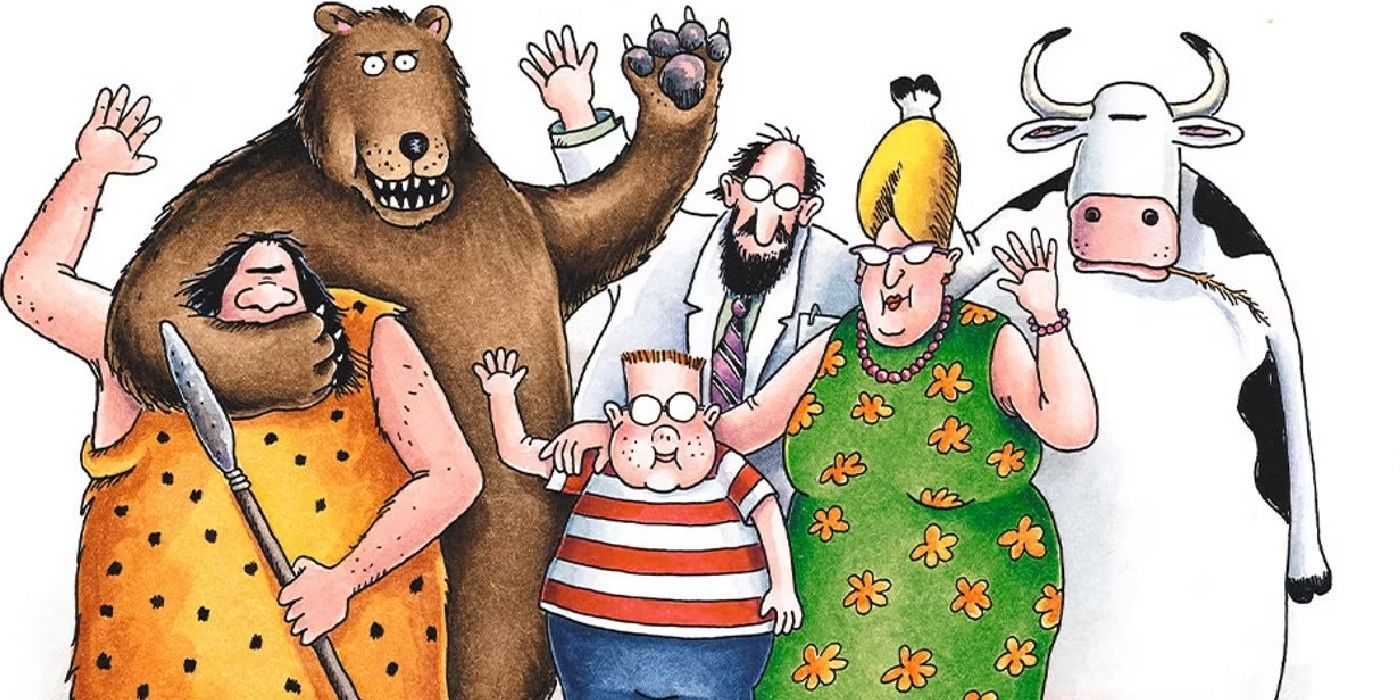
It isa classic Larsonian joke, one which shows how early the style ofThe Far Sidewas already evident, yet it also speaks to his rapid evolution as an artist.
Gary Larson’s “Out of Order” comic, published in 1988, perfectly illustrated of how the business of creating The Far Side wore him down over time.
Readers will notice the primitive or perhaps the better word is tentative quality of thisNature’s Waydrawing in comparison to itsFar Sidesequel, which highlights the progression of Gary Larson’s artistic abilities just a few years into his career.

WithThe Far Side, Larson often utilized intentionally minimalist, and at timeseven deliberately terrible art, yet despite his own self-effacing criticisms, he was actually a talented illustrator, one who learned rapidly on the job once he had tosit down at his desk daily and come up with newFar Sidecomics.
The Far Side’s Perspective On Humor Behavior Started In “Nature’s Way”
Another Early Gary Larson Comic
This is anotherNature’s Waycartoon which later inspired aFar Side"sequel" of sorts.
In this sparsely illustrated panel, a woman is minding her own business in her living room well, not quiet, she’s actually minding her pet fish’s business, pressing her eye up against the glass of its bowl, just as the giant, bloodshot eye of some unidentified monster does the same, peering at her ominously through her front window.
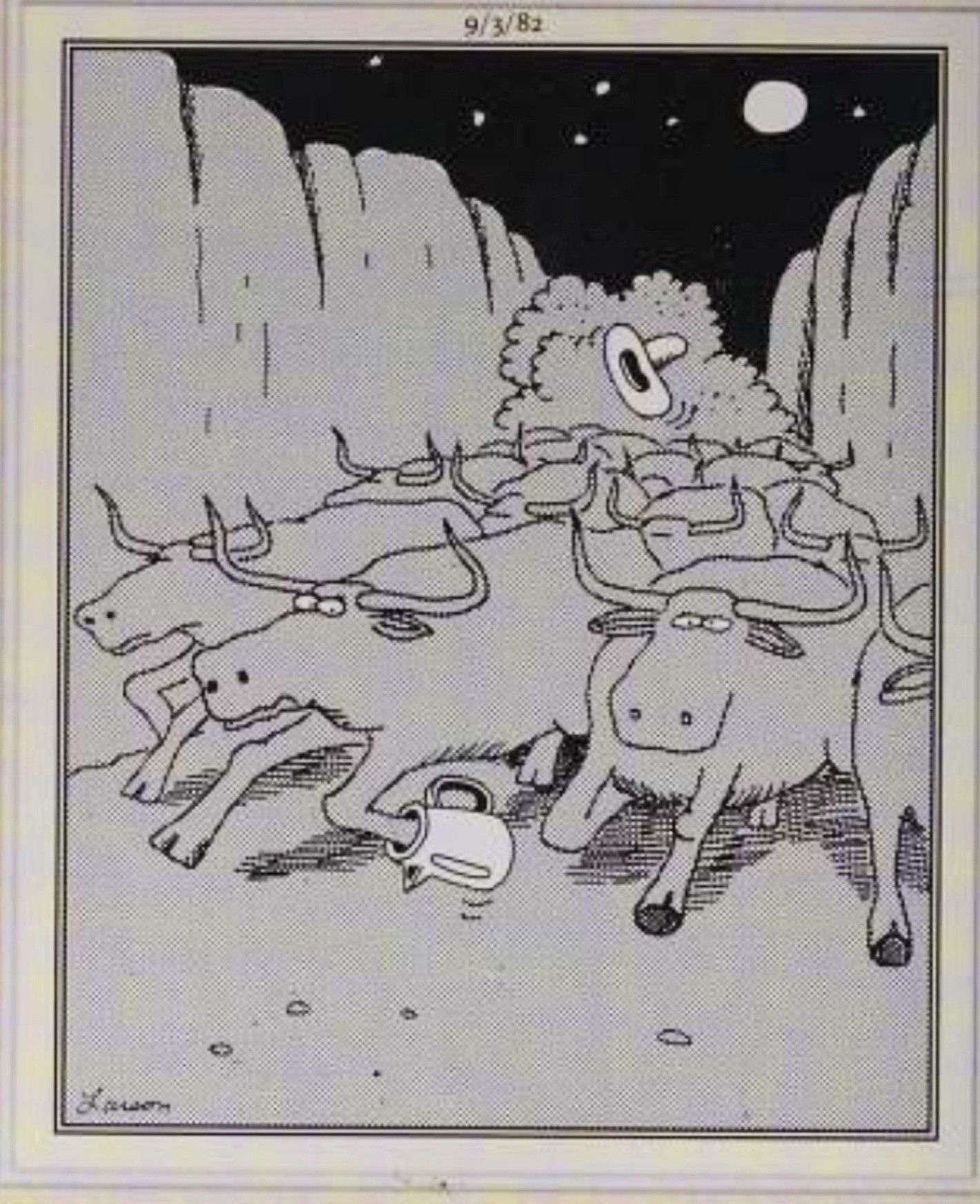
Once again,Gary Larson’s comedic perspective, which would makeThe Far Sidefamous, and notorious, seems fully-formed here.
It is the illustration that leaves more to be desired, at least for the artist, who returned to this idea and produced a more fully fleshed-out version.
The joke, however simple its form might be, isa patented Larsonian punchline, showing off his ability to put human behavior into a unique, unexpected perspective in this case, literally, by contrasting the size disparity between a human and a goldfish with the difference in size between a monster and a human.
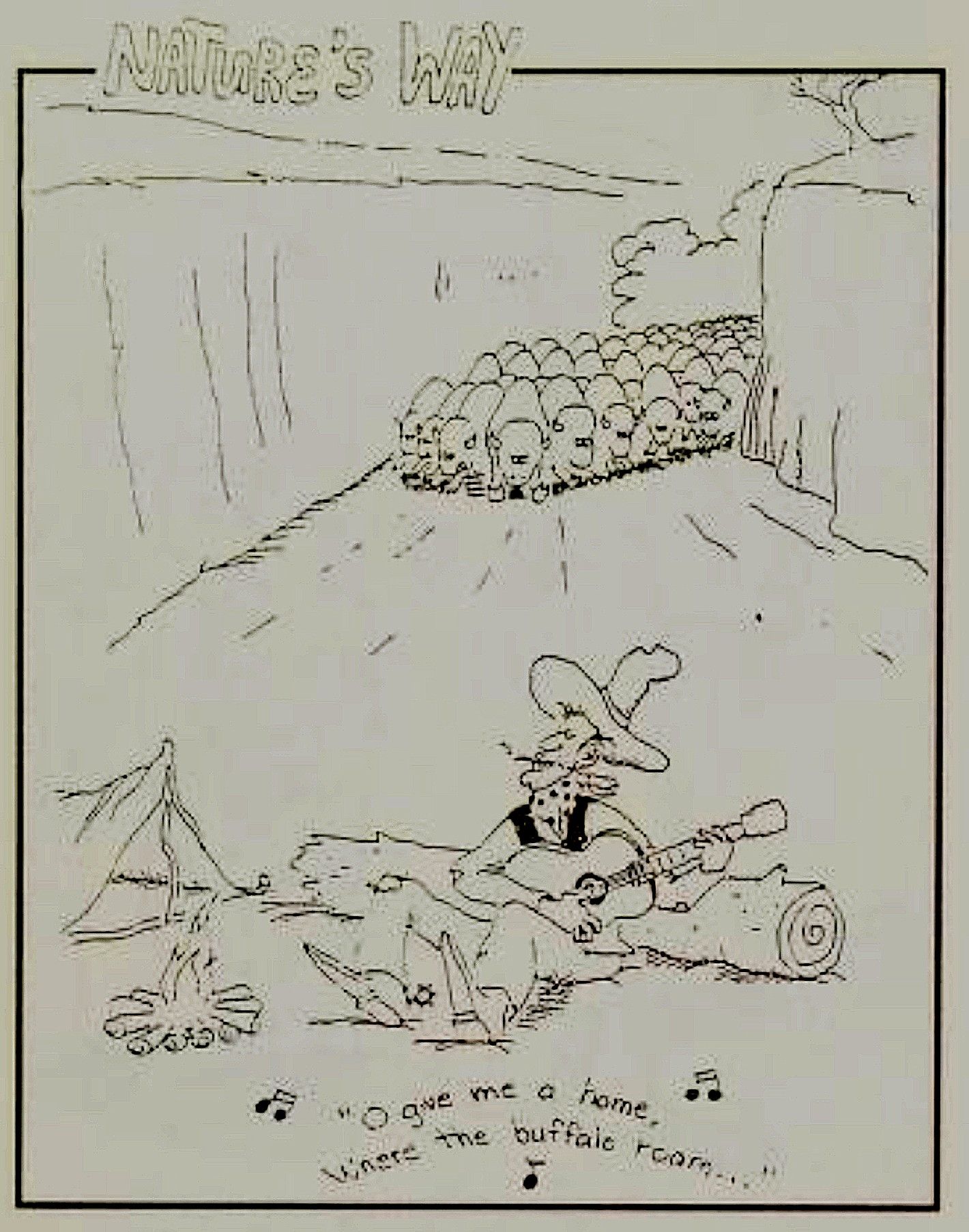
Yet once again, it is the illustration that leaves more to be desired, at least for the artist, who returned to this idea and produced a more fully fleshed-out version onceThe Far Sidewas established.
Gary Larson’s “Eye” For Details Only Grew Sharper As The Far Side Progressed
First Published: July 5, 1982
Like his “Stampede” sequel, Gary Larson revisited thisNature’s Wayjoke in 1982, asThe Far Sidewas continuing to gain steam, leading to its nationwide success in the mid ’80s.
Again, the clear lineage between the two cartoons will be especially rewarding for hardcore fans of Larson’s work; while theNature’s Waycartoon featured the woman blissfully unaware of the presence of a giant eye watching her, here Larson picks up with herin the moments after she realizes it, and finds her suprisingly calm, phoning a friend to have her “describe what’s in my front yard.”
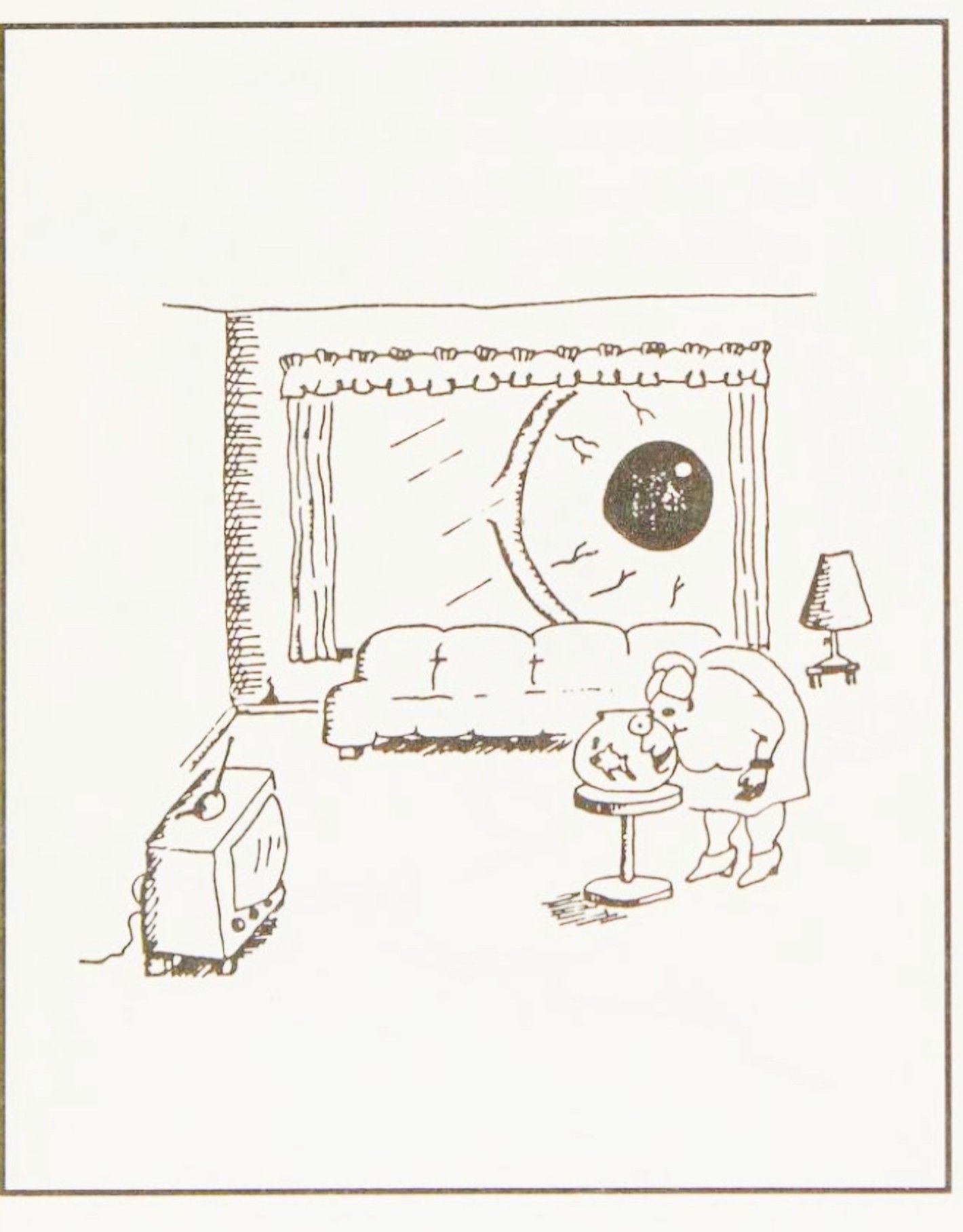
These Far Side comics will make readers question everything, proving artist Gary Larson wasn’t a stranger to conspiratorial thinking.
Again, the striking difference here is in the quality of the illustration, and the level of detail Larson includes.
The full-color version of the panel sticks out, with its contrast between the monster’s green skin, and the orange-yellow hues of the woman’s living room.
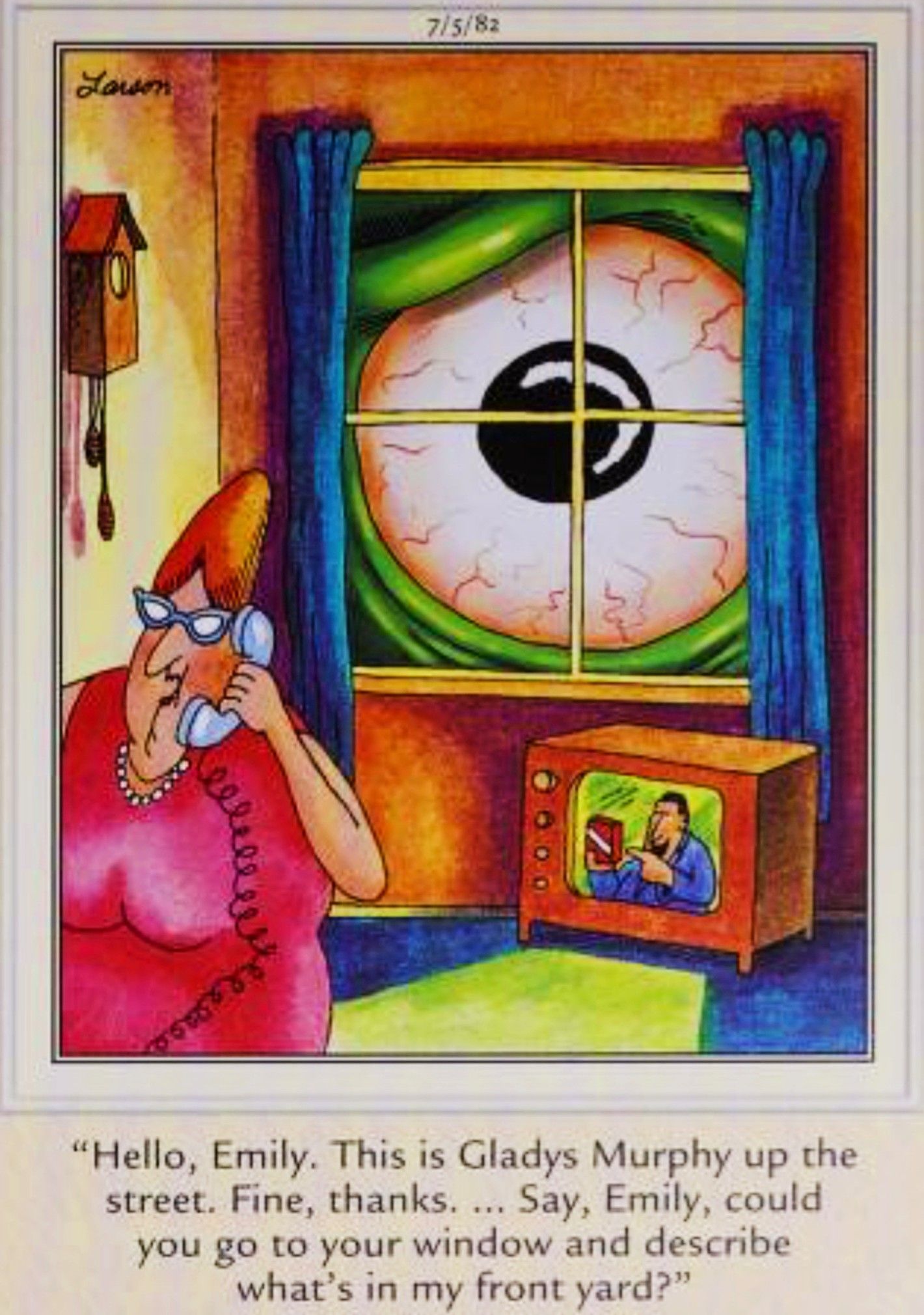
Most notably, the rendering of the blood-shot eye is far more complete, and far more imposing, which in the context of the punchline makes it that much funnier.
This is perhaps among the best examples of the vast strides Gary Larson made as an artist inThe Far Side’sformative years.
The Far Side’s Sequel Comics Are Among Its Most Rewarding Discoveries
Easter Eggs For Fans To Hunt Down
AmongThe Far Side’smost memorable “sequel” comicsare the 1987-88 comics “Dog With Gun” and “Dog With Dynamite Vest,” which feature canines threatening their owners with weapons.
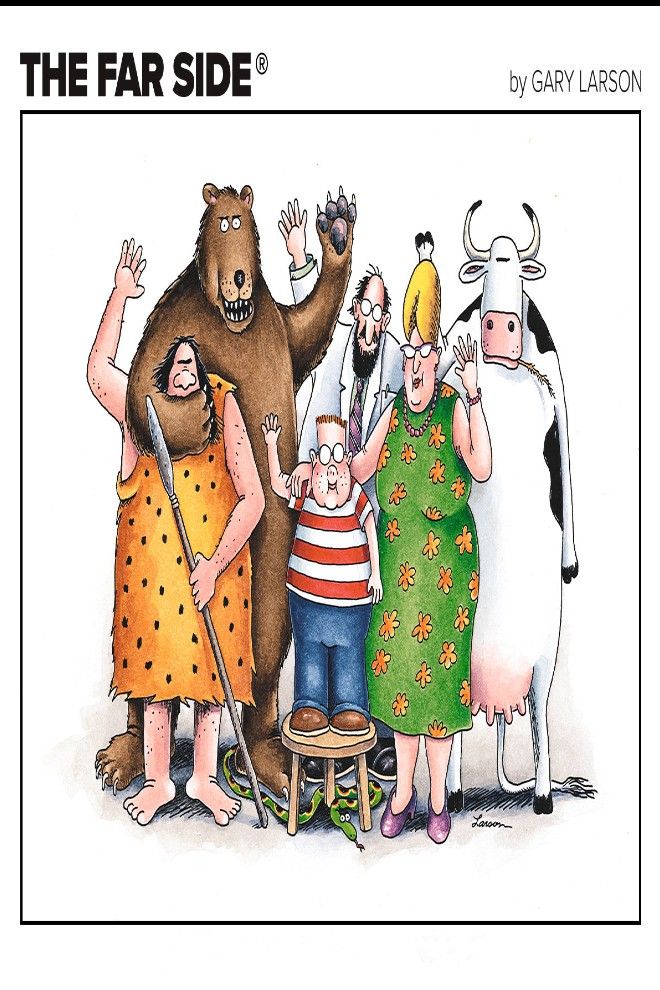
Another great example isGary Larson’s pair of “Sword in the Stone” cartoons, published just five days shy of exactly four years apart.In the first, a woman retrieves the mythical sword, while her friend advises her “put it back in the rock, Barbara”; in the latter, she once more unleashes the blade, prompting trumpet-playing angels to descend from the heavens until a satyr pops into frame shouting “stop the music!”
The Far Side was simultaneously experimental and formulaic, and this list catalogs the strain of comics that exist at the intersection of the two.
In each of these cases, the cartoons stand on their own as classicFar Sidejokes, as they were intended to; yet it makes them even more meaningful when considered in the context of other related cartoons from throughout Gary Larson’s career.

There are more examples of this within the thousands of cartoons Larson produced over the years, waiting to be found by intrepid fans of his work.
This is just one more example of the endless entertainment and engagement that is to be found inThe Far Sideeven all these years after it ceased publication.
Summary
Written and drawn by Gary Larson, The Far Side is a comic strip series that ran from December 1979 to January 1995.

A worldwide hit, The Far Side explores life’s surreal side and uses a mix of humans and anthropomorphic animals.
As of 2020, Gary Larson decided to pick his pencil back up again and has started The Far Side up, circulating the comics on his official website.